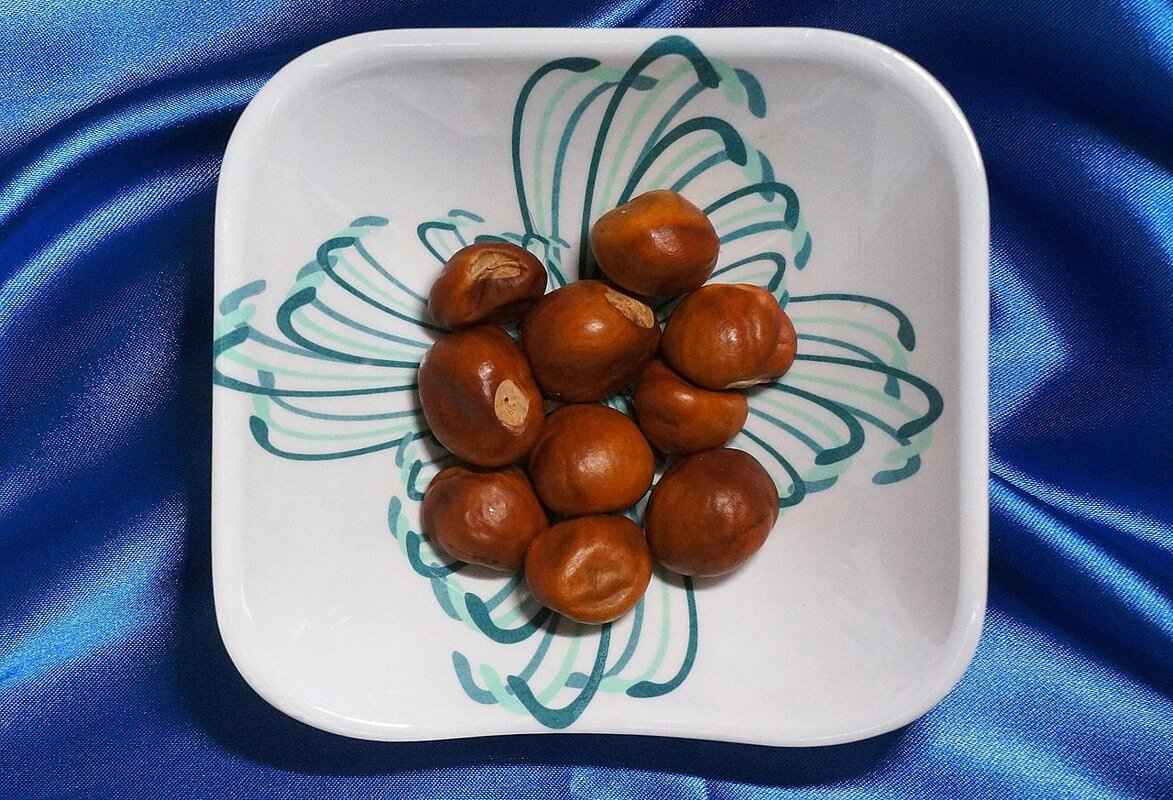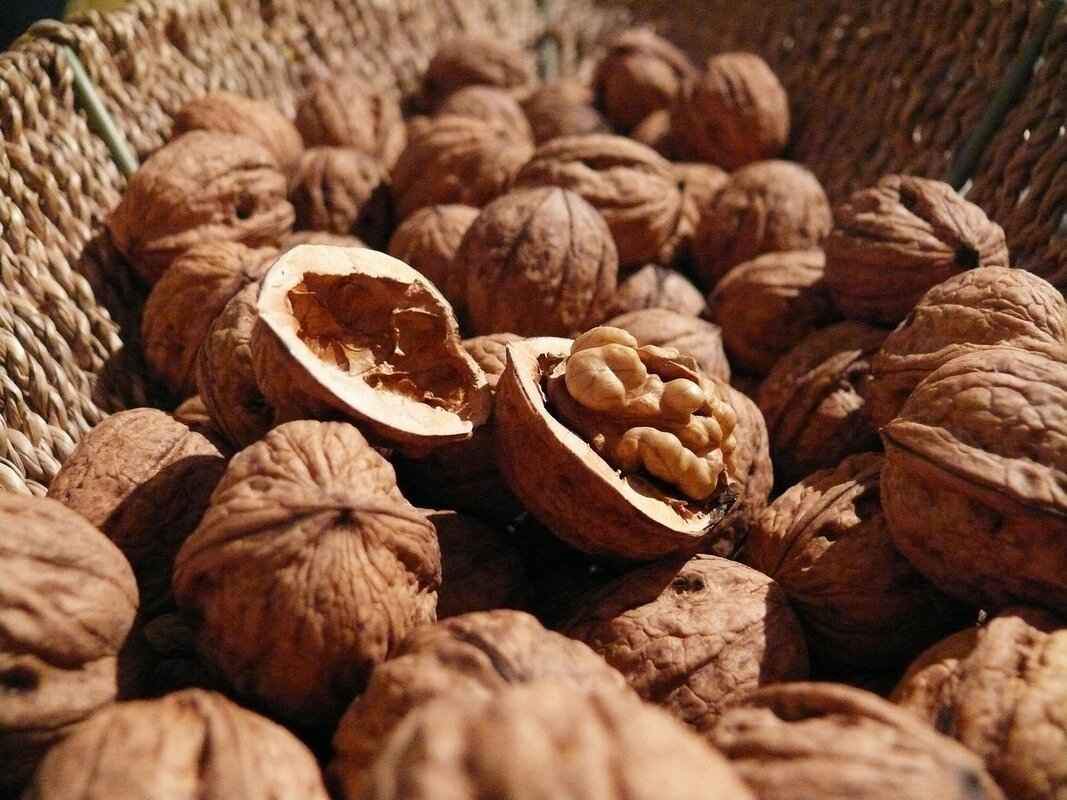Nuts, seeds, and oils play a pivotal role in Asian cuisine, contributing not only to the flavor and texture of dishes but also enhancing their nutritional value. These ingredients are deeply embedded in the cultural fabric of various Asian countries, reflecting local traditions and culinary practices. As we explore the significance of these components, we will uncover their diverse applications and the health benefits they offer.
Nuts are more than just a crunchy addition to meals; they bring a unique nutritional profile and flavor dimension to Asian dishes. Commonly used nuts include cashews, almonds, and walnuts, each contributing distinct textures and tastes. For instance, cashews are often used in creamy sauces and stir-fries, while peanuts are a staple in many street foods.
Seeds, such as sesame and pumpkin seeds, are integral to the flavor profiles of numerous Asian recipes. They can be toasted to release their oils, enhancing their taste and aroma. The versatility of seeds allows them to be used in various forms, from whole seeds in salads to ground seeds in sauces.
- Sesame Seeds: Widely used in Asian cooking, sesame seeds add a nutty flavor and are often found in dishes like sushi and stir-fries.
- Flax Seeds: Known for their health benefits, flax seeds are rich in omega-3 fatty acids and are often added to smoothies and baked goods.
- Chia Seeds: These tiny seeds are packed with nutrients and can be used in puddings and as toppings for various dishes.
In traditional Asian cuisine, seeds are often ground into pastes or used as toppings. For example, tahini made from sesame seeds is a common ingredient in Middle Eastern dishes, while various Asian sauces utilize ground nuts and seeds for added depth of flavor.
Oils are crucial in Asian cooking, affecting flavor and cooking methods. Commonly used oils include:
- Sesame Oil: This oil is often used for dressings and finishing dishes due to its rich flavor.
- Peanut Oil: Ideal for frying, peanut oil has a high smoke point and imparts a subtle nutty flavor.
- Coconut Oil: Frequently used in Southeast Asian cuisine, coconut oil adds a distinct flavor to curries and desserts.
When selecting an oil, consider the cooking method and desired flavor profile. For instance, sesame oil is perfect for low-heat cooking or as a finishing touch, while peanut oil is excellent for high-temperature frying.
Nuts and seeds are packed with essential nutrients, including healthy fats, protein, and vitamins. They are an important part of a balanced diet, particularly in Asian cooking, where they contribute to heart health and overall wellness.
Incorporating nuts and seeds into meals can lead to numerous health benefits. They help improve heart health, support weight management, and provide sustained energy throughout the day. For example, almonds are known for their vitamin E content, while walnuts are rich in antioxidants.
Experimenting with nuts and seeds in Asian recipes can yield innovative dishes. Consider creating nut-based sauces for stir-fries, using seeds as toppings for salads, or incorporating them into desserts for added crunch and nutrition. The possibilities are endless, making nuts and seeds essential components in modern Asian cooking.

Why Are Nuts Essential in Asian Cuisine?
Nuts are an integral part of Asian cuisine, offering a delightful combination of **flavors** and **textures** that elevate both traditional and modern dishes. Their versatility allows them to be incorporated into a variety of recipes, from savory stir-fries to sweet desserts. Beyond their culinary uses, nuts are also celebrated for their **health benefits**, making them a staple ingredient across many regions in Asia.
In Asian cooking, nuts serve multiple purposes. They are not only a source of **crunch** and **richness** but also add a layer of **complexity** to dishes. For instance, the use of **cashews** in Indian curries or **peanuts** in Thai satays showcases how these ingredients can transform a simple meal into a gourmet experience. Nuts are often used in both whole and ground forms, allowing chefs to experiment with textures and flavors.
Moreover, nuts are packed with essential nutrients. They are rich in **healthy fats**, **protein**, and various vitamins, contributing significantly to a balanced diet. For example, almonds and walnuts are known for their heart-healthy properties, while pistachios provide a good source of fiber. This nutritional profile makes nuts an ideal choice for those seeking to enhance their health while enjoying delicious food.
In addition to their health benefits, nuts hold cultural significance in many Asian societies. They are often featured in festive dishes or used as offerings in religious ceremonies. For example, during the Lunar New Year, families in China often prepare dishes that include **walnuts** and **peanuts** as symbols of prosperity and good fortune. This cultural context adds depth to their culinary applications, making nuts not just an ingredient but a part of heritage and tradition.
Furthermore, the **variety** of nuts used in Asian cuisine is extensive. From the **crunchy** texture of **hazelnuts** in desserts to the creamy consistency of **macadamia nuts** in sauces, each nut contributes its unique flavor profile. This variety allows chefs to create dishes that are not only visually appealing but also rich in taste.
In conclusion, nuts play a vital role in Asian cuisine by enhancing flavors, adding texture, and providing numerous health benefits. Their cultural significance further enriches their importance in cooking, making them a beloved ingredient across the continent. Whether used in traditional recipes or innovative dishes, nuts are undoubtedly essential in the culinary landscape of Asia.

How Do Seeds Enhance Flavor in Asian Dishes?
Seeds are an essential component of Asian cuisine, not only for their nutritional value but also for their ability to enhance the flavor profiles of various dishes. Among the myriad of seeds used in cooking, sesame and pumpkin seeds stand out for their unique contributions. These seeds are not only versatile but also packed with health benefits, making them a staple in many recipes across the continent.
Seeds such as sesame and pumpkin are celebrated for their rich, nutty flavors that can transform simple dishes into culinary masterpieces. When toasted, these seeds release essential oils that intensify their taste, adding depth and complexity to various preparations. For instance, sesame seeds are often used in dressings, marinades, and as toppings for sushi, providing a delightful crunch and a burst of flavor.
In addition to their flavor-enhancing properties, seeds contribute to the nutritional profile of dishes. They are rich in healthy fats, proteins, and essential vitamins, making them an excellent addition to a balanced diet. Incorporating seeds into meals can improve heart health, support weight management, and provide sustained energy throughout the day.
- Sesame Seeds: Often used in Asian cooking, sesame seeds can be found in both white and black varieties. They add a nutty flavor and are a key ingredient in dishes like tahini and various sauces.
- Pumpkin Seeds: Known for their crunchy texture, pumpkin seeds are often sprinkled on salads or incorporated into stir-fries, enhancing both flavor and nutrition.
- Flax Seeds: While not as traditional, flax seeds are gaining popularity for their omega-3 fatty acids and fiber content, making them a great addition to smoothies and baked goods.
Sesame seeds can be used in various ways to enhance the flavor of dishes. They can be toasted to bring out their rich flavor and then sprinkled on top of salads, stir-fries, or noodle dishes. Additionally, ground sesame seeds can be transformed into tahini, which serves as a base for dressings and dips.
Pumpkin seeds are not just flavorful; they are also a powerhouse of nutrients. They are high in magnesium, zinc, and antioxidants, which contribute to overall health. Incorporating pumpkin seeds into Asian dishes can provide a satisfying crunch while boosting the nutritional content of meals.
In traditional Asian recipes, seeds are often ground into pastes or used as toppings. For example, sesame seeds are integral to the preparation of goma dressing, a popular sesame-based sauce used in salads and as a dip. Similarly, pumpkin seeds can be ground and mixed into sauces to add texture and flavor.
Seeds are packed with essential nutrients, including healthy fats, protein, and vitamins. They are an important part of a balanced diet in Asian cooking, offering benefits such as improved digestion and enhanced heart health. Their inclusion in meals can lead to a more satisfying and nutrient-rich dining experience.
Incorporating a variety of nuts and seeds into meals can support overall health. They provide essential fatty acids, which are crucial for brain health, and their high fiber content can aid in digestion. Furthermore, the antioxidants found in seeds can help combat oxidative stress and inflammation.
Experimenting with nuts and seeds in Asian recipes can lead to innovative dishes. Consider creating nut-based sauces for stir-fries, using seeds as toppings for rice dishes, or incorporating them into desserts for added texture and flavor. The possibilities are endless, allowing for creativity in the kitchen.
What Types of Seeds Are Commonly Used?
Seeds play a crucial role in Asian cooking, offering not only unique flavors but also a variety of health benefits. Among the most commonly used seeds are sesame, flax, and chia. Each of these seeds contributes distinct characteristics to dishes, enhancing both taste and nutritional value.
Sesame seeds are a staple in many Asian cuisines, particularly in dishes from Japan, China, and Korea. These tiny seeds can be used in various forms, such as whole, toasted, or ground into a paste known as tahini. Their nutty flavor and crunchy texture make them perfect for garnishing salads, soups, and stir-fries.
- In Japanese cuisine, sesame seeds are often sprinkled on sushi rolls and salads.
- In Chinese cooking, they are used in sauces and as a topping for dumplings.
- Korean dishes frequently incorporate sesame oil, which is derived from toasted sesame seeds, adding depth to marinades and dressings.
Flax seeds are becoming increasingly popular in Asian cuisine due to their numerous health benefits. Rich in omega-3 fatty acids and dietary fiber, these seeds can help improve heart health and aid digestion.
- They can be added to smoothies for an extra nutritional boost.
- In baked goods, flax seeds can serve as a healthy substitute for eggs, making them ideal for vegan recipes.
- Flax seeds can also be sprinkled on salads or incorporated into stir-fried dishes for added texture and flavor.
Chia seeds have gained popularity in various cuisines, including Asian cooking, due to their unique ability to absorb liquid and form a gel-like consistency. This property makes them perfect for creating puddings and thickening soups.
- Chia seeds can be soaked overnight in coconut milk and sweetened with honey for a delightful dessert.
- In savory dishes, they can be used to thicken sauces or incorporated into dressings for salads.
- These seeds are also a great source of protein and antioxidants, making them a nutritious addition to any meal.
Incorporating seeds into traditional recipes not only enhances flavor but also adds a layer of cultural significance. For example, sesame seeds are often used in Asian desserts, like sesame balls, which are filled with sweet red bean paste. Flax seeds can be ground and mixed into dough for traditional breads, while chia seeds can be used in modern variations of classic dishes, adding a contemporary twist.
Each of these seeds offers a wealth of nutrients. Sesame seeds are packed with calcium and magnesium, essential for bone health. Flax seeds provide a good source of lignans, which have antioxidant properties. Meanwhile, chia seeds are rich in fiber and protein, making them an excellent choice for those looking to maintain a balanced diet.
In conclusion, the incorporation of sesame, flax, and chia seeds into Asian cooking not only enhances the flavor profile of dishes but also provides significant health benefits. By understanding how to utilize these seeds effectively, cooks can create delicious and nutritious meals that celebrate the rich culinary traditions of Asia.
How to Use Sesame Seeds in Cooking?
Sesame seeds are a versatile ingredient in Asian cooking, renowned for their ability to enhance both the flavor and aesthetic appeal of various dishes. These tiny seeds pack a powerful punch, contributing to the culinary experience in multiple ways.
Toasting sesame seeds is a simple yet effective technique that brings out their natural oils and intensifies their nutty flavor. When heated, the seeds undergo a transformation, resulting in a richer taste that can elevate any dish. This process not only enhances the flavor but also adds a delightful crunch, making them an excellent garnish for salads, soups, and stir-fries.
- Stovetop Method: Heat a dry skillet over medium heat. Add the sesame seeds and stir frequently for 3-5 minutes until they turn golden brown and fragrant. Be cautious, as they can burn quickly.
- Oven Method: Preheat your oven to 350°F (175°C). Spread the seeds evenly on a baking sheet and roast for about 10 minutes, stirring halfway through. Keep a close eye to prevent burning.
Sesame seeds are often used as a garnish in dishes like sushi and stir-fries, providing a visually appealing touch while enhancing the overall flavor profile. Their small size allows them to complement other ingredients without overpowering them. For instance, a sprinkle of toasted sesame seeds over a bowl of ramen or a fresh salad can add both texture and a nutty aroma that tantalizes the taste buds.
Beyond garnishing, sesame seeds can be blended into marinades or dressings to create depth in flavor. Mixing ground sesame seeds into a dressing can provide a creamy texture and a rich, nutty taste that pairs excellently with grilled meats or roasted vegetables. A classic example is the Asian sesame dressing, which combines toasted sesame oil, soy sauce, vinegar, and ground sesame seeds for a delightful balance of flavors.
In addition to their culinary uses, sesame seeds are packed with nutritional benefits. They are an excellent source of healthy fats, particularly unsaturated fatty acids, as well as essential minerals like calcium, magnesium, and iron. Incorporating sesame seeds into your diet can support heart health, improve bone density, and provide antioxidants that combat oxidative stress.
There are countless ways to incorporate sesame seeds into your cooking. Here are a few ideas:
- Baking: Add sesame seeds to bread and pastry dough for an extra crunch and flavor.
- Snack Mixes: Combine toasted sesame seeds with nuts and dried fruits for a nutritious snack.
- Granola: Include sesame seeds in homemade granola for added texture and taste.
In conclusion, sesame seeds are more than just a garnish; they are a powerful ingredient that can enhance the flavor, texture, and nutritional value of numerous dishes in Asian cuisine. By toasting, garnishing, or incorporating them into dressings and marinades, you can unlock their full potential and enjoy the myriad benefits they offer.
What Are the Health Benefits of Flax Seeds?
Flax seeds, often hailed as a superfood, are becoming increasingly popular in various culinary traditions, including Asian cuisine. These tiny seeds are not just a passing trend; they are packed with essential nutrients that can significantly enhance the health benefits of your meals. In this section, we will explore the health benefits of flax seeds and how they can be easily incorporated into your diet.
Flax seeds are renowned for their rich content of omega-3 fatty acids, particularly alpha-linolenic acid (ALA). This essential fatty acid is crucial for maintaining heart health and reducing inflammation in the body. Additionally, flax seeds are an excellent source of dietary fiber, which aids in digestion and promotes a feeling of fullness.
The high fiber content in flax seeds can help regulate bowel movements and alleviate constipation. The soluble fiber absorbs water, forming a gel-like substance that aids in digestion. Regular consumption of flax seeds can lead to improved gut health, making them a valuable addition to smoothies, salads, and baked goods.
Incorporating flax seeds into your diet can be a heart-healthy choice. The omega-3 fatty acids found in flax seeds help lower blood pressure, reduce cholesterol levels, and decrease the risk of heart disease. Studies have shown that regular consumption can lead to improved cardiovascular health, making them an essential ingredient in Asian dishes like rice bowls and stir-fries.
Flax seeds can be easily integrated into various Asian recipes. Here are some creative ways to use them:
- Smoothies: Add ground flax seeds to your morning smoothie for an extra boost of nutrition.
- Salads: Sprinkle whole or ground flax seeds over salads for added texture and health benefits.
- Baked Goods: Incorporate flax seeds into bread, muffins, or pancakes for a nutritious twist.
- Soups and Stews: Stir in ground flax seeds to thicken soups and enhance their nutritional profile.
While flax seeds offer numerous health benefits, it’s important to consume them in moderation. Whole flax seeds may pass through the digestive system undigested, so it’s advisable to consume them ground. Additionally, those on certain medications or with specific health conditions should consult a healthcare professional before adding flax seeds to their diet.
The general recommendation for flax seed consumption is about 1-2 tablespoons of ground flax seeds per day. This amount provides a sufficient dose of omega-3 fatty acids and fiber without overwhelming your digestive system.
In conclusion, flax seeds are a versatile and nutrient-dense addition to Asian cuisine. Their health benefits, particularly for heart health and digestion, make them a valuable ingredient in a balanced diet. By incorporating flax seeds into your meals, you can enhance both the flavor and nutritional value of your dishes.
How Are Seeds Incorporated into Traditional Recipes?
Seeds are an integral component of many traditional recipes across various cultures, particularly in Asian cuisine. Their incorporation into dishes not only enhances flavor but also adds nutritional value and texture. From being ground into pastes to serving as toppings, seeds play a crucial role in elevating culinary experiences.
In Asian cooking, seeds such as sesame, pumpkin, and sunflower are often utilized in diverse ways. One of the most popular methods is grinding seeds into pastes. For example, sesame seeds are transformed into tahini, a creamy paste that serves as a base for various sauces and dressings. This technique not only intensifies the flavor but also allows the seeds to blend seamlessly with other ingredients.
- Sesame Paste: Found in dishes like hummus and salad dressings, sesame paste adds a rich, nutty flavor that enhances the overall taste profile.
- Flaxseed Meal: Ground flaxseeds can be incorporated into baked goods like bread and muffins, providing a boost of omega-3 fatty acids and fiber.
- Chia Seed Gel: Chia seeds can be soaked in water to create a gel-like substance, which is often used as a thickening agent in soups and smoothies.
In addition to being ground into pastes, seeds are frequently used as toppings to provide a delightful crunch and visual appeal. For instance, toasted sesame seeds are commonly sprinkled on dishes such as sushi, noodle salads, and stir-fries. This not only enhances the dish’s texture but also adds a burst of flavor that complements the other ingredients.
Another traditional application is the use of seeds in marinades and spice blends. In many Asian cuisines, seeds are toasted and ground together with spices to create flavorful blends that are used to season meats, vegetables, and rice. For example, a mixture of coriander seeds and cumin seeds can be ground to make a robust seasoning for grilled dishes.
Incorporating seeds into traditional recipes not only enhances flavor but also provides numerous health benefits. Seeds are packed with essential nutrients, including healthy fats, protein, and fiber. For instance, pumpkin seeds are an excellent source of magnesium, zinc, and antioxidants, promoting overall health. Similarly, chia seeds are rich in omega-3 fatty acids, which are beneficial for heart health.
Furthermore, seeds can help in managing weight and improving digestion. Their high fiber content promotes satiety, making them an ideal addition to meals for those looking to maintain a healthy weight. In traditional Asian cuisine, seeds are often included in dishes designed to be both nourishing and satisfying.
For those looking to incorporate seeds into their cooking, there are countless possibilities. Here are some creative ideas:
- Seed-Based Sauces: Blend sesame seeds with garlic, lemon, and olive oil for a delicious sauce that pairs well with grilled vegetables.
- Seed Toppings: Use a mixture of toasted seeds as a topping for soups, salads, and grain bowls to add texture and flavor.
- Baking with Seeds: Add ground flaxseeds or chia seeds to pancake or waffle batter for a nutritious breakfast option.
In conclusion, seeds are a versatile and nutritious ingredient that can elevate traditional recipes in Asian cuisine. Their incorporation into dishes not only enhances flavor and texture but also contributes to overall health, making them an essential component of a balanced diet.

What Oils Are Popular in Asian Cooking?
When it comes to Asian cuisine, oils are not just cooking mediums; they are essential ingredients that contribute to the overall flavor, aroma, and texture of dishes. The choice of oil can significantly influence the final outcome of a recipe, making it crucial for both home cooks and professional chefs to understand the different types of oils used in this diverse culinary landscape.
In Asian cooking, a variety of oils are utilized, each offering unique flavors and cooking properties. The most commonly used oils include:
- Sesame Oil: Known for its rich, nutty flavor, sesame oil is a staple in many Asian cuisines, particularly in Chinese, Korean, and Japanese dishes. It is often used in dressings, marinades, and as a finishing oil to enhance flavor.
- Peanut Oil: This oil has a high smoke point, making it ideal for frying and sautéing. Its slightly sweet flavor complements many dishes, particularly in Chinese and Thai cuisines.
- Coconut Oil: Commonly used in Southeast Asian cooking, coconut oil adds a subtle sweetness and tropical aroma to dishes. It is often used in curries and desserts.
- Canola Oil: With a neutral flavor and high smoke point, canola oil is versatile and often used for deep frying in various Asian recipes.
- Rice Bran Oil: This oil is gaining popularity due to its light flavor and high smoke point, making it suitable for stir-frying and deep-frying.
The choice of oil can greatly impact the flavor profile of a dish. For instance, using sesame oil in a salad dressing can impart a deep, nutty taste, while peanut oil can add a hint of sweetness when used for frying. Additionally, the smoke point of an oil is crucial when it comes to cooking methods:
- High Smoke Point Oils: Oils like peanut and canola are excellent for high-heat cooking methods such as frying, as they maintain their integrity without breaking down.
- Low Smoke Point Oils: Oils like sesame oil are best used for low-heat applications or as finishing oils, where their flavor can shine without being compromised.
Selecting the appropriate oil depends on the cooking method and the flavor you wish to achieve. Here are some tips:
- For Stir-Frying: Use oils with high smoke points like peanut or canola oil.
- For Dressings: Opt for sesame oil to add depth and richness.
- For Baking: Coconut oil can provide a unique flavor in desserts.
Many oils used in Asian cooking not only enhance flavor but also provide health benefits. For example:
- Sesame Oil: Rich in antioxidants and healthy fats, it can promote heart health.
- Coconut Oil: Contains medium-chain triglycerides (MCTs), which may support energy levels and metabolism.
- Peanut Oil: Provides a good source of vitamin E and healthy fats that support overall health.
Understanding the various oils used in Asian cooking can elevate your culinary skills and enhance your appreciation for this rich and diverse cuisine. By selecting the right oil for your dishes, you can unlock a world of flavors and health benefits.
Which Oils Are Commonly Used in Asian Cuisine?
In the vibrant and diverse world of Asian cuisine, oils play a crucial role in enhancing flavors, textures, and overall culinary experiences. Each type of oil brings its own unique characteristics, making them essential components in a variety of dishes. Understanding the common oils used in Asian cooking can elevate your culinary skills and deepen your appreciation for this rich culinary tradition.
Among the most popular oils in Asian cooking are sesame oil, peanut oil, and coconut oil. Each of these oils not only contributes distinct flavors but also enhances the nutritional profile of the dishes they are used in.
Sesame oil is revered for its rich, nutty flavor and is often used as a finishing oil in many Asian dishes. It is extracted from sesame seeds and comes in two varieties: light sesame oil, which is made from raw seeds, and dark sesame oil, which is made from toasted seeds. The latter is particularly potent in flavor and is typically used in dressings, marinades, and as a drizzle over cooked dishes.
Peanut oil is a favorite in Asian kitchens, especially for frying due to its high smoke point. This oil is extracted from peanuts and has a subtle flavor that complements a variety of dishes, including stir-fries and deep-fried snacks. Its ability to withstand high temperatures makes it ideal for cooking methods that require intense heat, ensuring that the food retains its texture and flavor.
Coconut oil, derived from the flesh of coconuts, is another staple in many Asian cuisines, particularly in Southeast Asia. It imparts a slightly sweet and tropical flavor to dishes and is often used in curries, soups, and desserts. Additionally, coconut oil is known for its health benefits, including medium-chain triglycerides (MCTs), which can provide quick energy and support metabolic health.
Selecting the appropriate oil for your cooking needs can greatly impact the final outcome of your dish. Here are some tips:
- For dressings and marinades: Opt for sesame oil to add a rich flavor.
- For frying: Choose peanut oil for its high smoke point and neutral taste.
- For curries and tropical dishes: Use coconut oil to enhance the dish’s flavor profile.
In addition to their culinary applications, these oils also offer various health benefits:
- Sesame oil: Rich in antioxidants and healthy fats, it may help reduce inflammation.
- Peanut oil: Contains monounsaturated fats that can support heart health.
- Coconut oil: Known for its MCTs, it can aid in weight management and provide energy.
Proper storage of cooking oils is essential to maintain their flavor and nutritional value. Here are some tips:
- Store oils in a cool, dark place to prevent oxidation.
- Use airtight containers to keep out moisture and light.
- Check expiration dates and use oils within their recommended timeframe for optimal freshness.
By understanding the unique properties and uses of these common oils, you can enhance your Asian cooking skills and create dishes that are not only flavorful but also nutritious. Experimenting with different oils will allow you to discover new dimensions in your culinary creations.
How to Choose the Right Oil for Cooking?
Choosing the right oil for cooking is essential in enhancing the flavors and textures of your dishes. Different oils not only contribute unique tastes but also have varying smoke points and health benefits. Understanding these factors can significantly elevate your culinary experience.
When selecting an oil, consider the following factors:
- Cooking Method: Different cooking techniques require different oils. For instance, high-heat methods such as frying or sautéing necessitate oils with high smoke points.
- Flavor Profile: The flavor of the oil can greatly influence the final dish. Some oils, like sesame oil, provide a rich, nutty flavor, while others, like canola oil, are more neutral.
- Nutritional Value: Consider the health benefits of the oil. Oils rich in unsaturated fats, like olive oil, are healthier choices compared to those high in saturated fats.
For frying and other high-heat cooking methods, oils with high smoke points are ideal. Some popular choices include:
- Peanut Oil: Excellent for frying due to its high smoke point (approximately 450°F). It also adds a subtle flavor to dishes.
- Canola Oil: With a smoke point around 400°F, it is versatile and has a mild taste, making it suitable for various applications.
- Grapeseed Oil: Another excellent option for high-heat cooking, it has a smoke point of about 420°F and a light flavor.
When it comes to dressings and marinades, the flavor of the oil becomes more pronounced. Here are some oils that shine in these applications:
- Sesame Oil: Its rich, nutty flavor makes it a perfect choice for dressings, especially in Asian cuisine.
- Olive Oil: Known for its health benefits and robust flavor, it works wonderfully in salads and marinades.
- Avocado Oil: With a mild taste and high smoke point, it can be used both for cooking and in dressings.
Don’t hesitate to experiment with various oils in your cooking. Here are some tips:
- Mix and Match: Combine oils to create unique flavors. For example, mixing sesame oil with olive oil can provide a delightful taste for dressings.
- Understand Pairings: Pair oils with specific ingredients. For instance, peanut oil complements Asian stir-fries, while olive oil enhances Mediterranean dishes.
- Adjust Quantities: Start with small amounts of flavorful oils, such as sesame or truffle oil, to avoid overpowering your dish.
It’s crucial to consider the health implications of the oils you choose:
- Heart Health: Opt for oils rich in unsaturated fats, like olive and avocado oil, which are beneficial for heart health.
- Omega-3 Fatty Acids: Flaxseed oil and walnut oil are excellent sources of omega-3s, promoting overall health.
- Moderation: While oils can be healthy, they are calorie-dense, so use them in moderation to maintain a balanced diet.
By understanding the various types of oils and their applications, you can enhance your cooking skills and create flavorful, nutritious dishes that reflect the rich traditions of Asian cuisine.

What Nutritional Benefits Do Nuts and Seeds Offer?
Nuts and seeds are often hailed as nutritional powerhouses, rich in essential nutrients that contribute to overall health and well-being. In Asian cooking, these ingredients not only enhance flavors and textures but also provide a myriad of health benefits that make them indispensable in a balanced diet.
Nuts and seeds are packed with a variety of essential nutrients, including healthy fats, proteins, vitamins, and minerals. Their incorporation into meals can significantly boost nutritional value while adding depth to the dishes. Here are some key benefits:
- Healthy Fats: Nuts and seeds are a great source of unsaturated fats, which are beneficial for heart health. They help lower bad cholesterol levels and reduce the risk of heart disease.
- Protein Power: Both nuts and seeds provide a substantial amount of plant-based protein, making them an excellent option for vegetarians and vegans.
- Rich in Vitamins: They are loaded with vitamins such as Vitamin E, which acts as an antioxidant, and B vitamins that support energy metabolism.
- Mineral Content: Nuts and seeds are rich in essential minerals like magnesium, zinc, and iron, vital for various bodily functions.
Incorporating nuts and seeds into your diet can have profound effects on your health:
- Heart Health: The omega-3 fatty acids found in flaxseeds and walnuts are known to support cardiovascular health by reducing inflammation and improving cholesterol levels.
- Weight Management: Despite being calorie-dense, nuts can promote satiety, helping to control appetite and support weight loss efforts when consumed in moderation.
- Energy Boost: The combination of healthy fats and protein in nuts and seeds provides sustained energy, making them an ideal snack for active individuals.
Experimenting with nuts and seeds in Asian recipes can lead to innovative and delicious dishes. Here are some creative ideas:
- Nut-Based Sauces: Create rich, flavorful sauces using ground nuts, such as cashew or almond paste, to enhance stir-fries and marinades.
- Seed Toppings: Sprinkle toasted sesame seeds or pumpkin seeds on salads, soups, or rice dishes for added crunch and flavor.
- Unique Desserts: Incorporate nuts and seeds into traditional Asian desserts, such as using ground peanuts in mochi or adding chia seeds to sweet soups.
In summary, nuts and seeds are not only versatile ingredients in Asian cooking but also provide numerous health benefits that support a balanced diet. Their rich nutritional profile enhances the flavor and texture of dishes while contributing to overall health. By understanding how to incorporate these ingredients creatively, you can elevate your culinary experience and promote well-being.
How Do Nuts and Seeds Contribute to Health?
Incorporating nuts and seeds into your diet is not just a culinary choice but a significant step towards enhancing your overall health. These tiny powerhouses are packed with nutrients that contribute to various aspects of well-being, making them indispensable in any balanced diet.
Research has shown that regular consumption of nuts and seeds can lead to improved heart health. They are rich in monounsaturated fats and polyunsaturated fats, which help reduce bad cholesterol levels. For instance, almonds and walnuts are particularly noted for their ability to lower the risk of heart disease. Additionally, they contain antioxidants that combat oxidative stress, further protecting your heart.
Despite being calorie-dense, nuts and seeds can actually aid in weight management. Their high protein and fiber content promote feelings of fullness, reducing the likelihood of overeating. For example, a handful of pistachios or a tablespoon of chia seeds can satisfy hunger and provide sustained energy without the need for unhealthy snacks.
Nuts and seeds are excellent sources of energy. They are loaded with healthy fats, proteins, and essential vitamins and minerals that provide a steady energy release throughout the day. For instance, sunflower seeds are rich in magnesium, which is crucial for energy production. Incorporating these foods into your breakfast or as snacks can help maintain energy levels, preventing the mid-afternoon slump.
- Almonds: Great for heart health and rich in vitamin E.
- Walnuts: High in omega-3 fatty acids, beneficial for brain health.
- Chia Seeds: Packed with fiber, protein, and omega-3s.
- Flax Seeds: Excellent source of lignans and omega-3 fatty acids.
There are numerous ways to add nuts and seeds to your meals:
- Sprinkle them on salads for added crunch and nutrition.
- Blend them into smoothies for a protein boost.
- Use nut butters in sandwiches or as a dip for fruits.
- Add seeds to baked goods for enhanced flavor and texture.
Nuts and seeds are not only beneficial for heart health and weight management; they also provide essential nutrients such as vitamins, minerals, and antioxidants. These nutrients play a vital role in immune function, bone health, and skin health. For instance, Brazil nuts are an excellent source of selenium, which supports thyroid function and boosts immunity.
In summary, incorporating nuts and seeds into your daily meals can significantly enhance your health. Their multifaceted benefits—from improving heart health and aiding in weight management to providing sustained energy—make them a valuable addition to any diet. By exploring various ways to include these nutrient-dense foods, you can enjoy their health benefits while also enhancing the flavors and textures of your meals.
What Are Some Creative Ways to Use Nuts and Seeds?
Exploring the culinary possibilities of nuts and seeds can transform traditional Asian recipes into innovative and exciting dishes. As ingredients that pack a punch in both flavor and nutrition, they offer a versatile range of applications that can elevate any meal.
Incorporating nuts and seeds into Asian cuisine not only enhances the taste but also adds a delightful crunch and nutritional benefits. Here are some creative ideas to inspire your cooking:
- Nut-Based Sauces: Experiment with creating sauces from blended nuts, such as cashews or peanuts. These can serve as bases for dressings or dips, adding a creamy texture and rich flavor. For example, a spicy peanut sauce can elevate salads or grilled meats.
- Seed Toppings: Use toasted sesame seeds or pumpkin seeds as a topping for stir-fries, soups, or salads. Not only do they enhance the visual appeal, but they also provide a satisfying crunch and nutty flavor.
- Nutty Desserts: Incorporate nuts into traditional desserts like mochi or rice cakes. Ground nuts can add a unique flavor profile and texture, making these treats even more delightful.
- Nut Crusts: Create crusts for fish or tofu using crushed nuts. This method not only adds flavor but also provides a healthy alternative to traditional breading techniques.
- Infused Oils: Make your own flavored oils by infusing sesame or peanut oil with crushed nuts or seeds. This can be used for drizzling over dishes or as a base for stir-frying, imparting a rich flavor.
- Nut and Seed Granola: Prepare a homemade granola mix featuring a variety of nuts and seeds. This can be served with yogurt or as a topping for desserts, adding both crunch and nutrition.
These innovative applications of nuts and seeds not only enhance the flavor of Asian dishes but also contribute to a balanced diet. Experimenting with these ingredients can lead to unique culinary experiences that celebrate the rich traditions of Asian cuisine while embracing modern creativity.
By incorporating nuts and seeds into your cooking, you can explore a realm of flavors and textures that traditional recipes may not fully capture. Each type of nut or seed brings its own unique profile, allowing for endless possibilities. For instance, almonds can add a sweet, buttery flavor, while walnuts offer a richer, earthier taste. Similarly, chia seeds can serve as a thickening agent in sauces or smoothies, providing a nutritious boost.
Furthermore, nuts and seeds are packed with essential nutrients, including healthy fats, protein, and fiber. This makes them an excellent choice for those looking to enhance their meals nutritionally. The versatility of these ingredients allows them to be used in both savory and sweet dishes, making them a staple in any kitchen.
In conclusion, experimenting with nuts and seeds in Asian recipes not only leads to innovative dishes but also enriches your culinary repertoire. By embracing these ingredients, you can create flavorful, nutritious meals that pay homage to the rich traditions of Asian cuisine while adding your unique twist.
Frequently Asked Questions
- What are the main benefits of using nuts in Asian cooking?
Nuts add a delightful crunch and rich flavor to dishes while also providing essential nutrients like healthy fats and protein. They are a powerhouse of energy, making them a favorite in many Asian cuisines.
- How do seeds contribute to the nutritional value of meals?
Seeds, such as sesame and flax, are packed with vitamins, minerals, and healthy fats. They enhance the nutritional profile of dishes, offering benefits like improved digestion and heart health.
- Which oils are best for frying in Asian recipes?
Peanut oil is often preferred for frying due to its high smoke point and flavor. However, sesame oil is great for dressings and finishing dishes, adding a unique aroma and taste.
- Can nuts and seeds be used in desserts?
Absolutely! Nuts and seeds can elevate desserts by adding texture and flavor. Think nut-based crusts, seed toppings, or even creamy nut butters in sweet treats!
- How can I incorporate more nuts and seeds into my diet?
Try adding them to salads, smoothies, or as toppings on various dishes. They can also be blended into sauces or used to create unique snacks!














